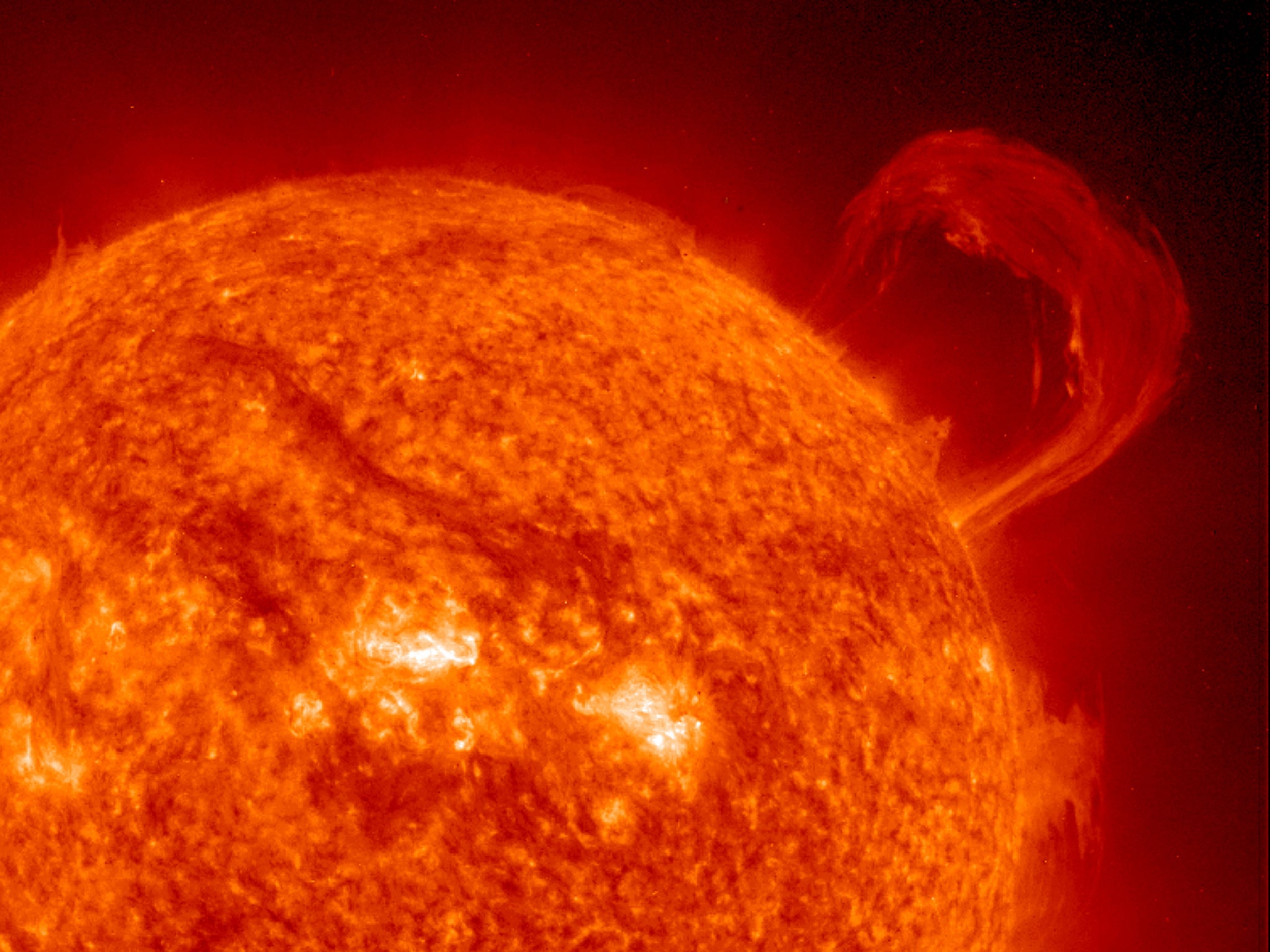Video: Sun has 'flipped upside down' as new magnetic cycle begins
The sun’s magnetic field has fully reversed its polarity, marking the midpoint of Solar Cycle 24, which will be completed in 11 years time

Support truly
independent journalism
Our mission is to deliver unbiased, fact-based reporting that holds power to account and exposes the truth.
Whether $5 or $50, every contribution counts.
Support us to deliver journalism without an agenda.

Louise Thomas
Editor
The sun has "flipped upside down", with its north and south poles reversed to reach the midpoint of Solar Cycle 24, Nasa has said.
Now, the magnetic fields will once again start moving in opposite directions to begin the completion of the 22 year long process which will culminate in the poles switching once again.
"A reversal of the sun's magnetic field is, literally, a big event," said Nasa’s Dr. Tony Phillips.
"The domain of the sun's magnetic influence (also known as the 'heliosphere') extends billions of kilometers beyond Pluto. Changes to the field's polarity ripple all the way out to the Voyager probes, on the doorstep of interstellar space."
To mark the event, Nasa has released a visualisation of the entire process.
At the beginning, in 1997 the video shows the sun in Solar Cycle 23 with its positive polarity on the top (the green lines), and the negative polarity on the bottom (the purple lines).
Each set of lines gradually move toward the opposite pole, showing a complete flip around 2002, completing the sun's previous cycle.
Both set of lines representing the opposing magnetic fields then begin to work their way back, to culminate in the latest flip.
READ MORE: Sun will 'flip upside down' within weeks, says Nasa
"At the height of each magnetic flip, the sun goes through periods of more solar activity, during which there are more sunspots, and more eruptive events such as solar flares and coronal mass ejections," said Nasa’s Karen C. Fox.
"Cosmic rays are also affected," added Dr. Phillips. "These are high-energy particles accelerated to nearly light speed by supernova explosions and other violent events in the galaxy."
Nasa spacewalks in pictures
Show all 11Subscribe to Independent Premium to bookmark this article
Want to bookmark your favourite articles and stories to read or reference later? Start your Independent Premium subscription today.
Join our commenting forum
Join thought-provoking conversations, follow other Independent readers and see their replies
Comments